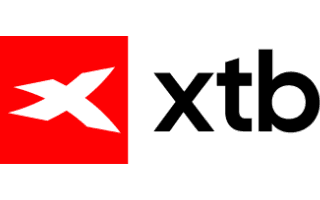
- Choose from 600+ ETFs
- Investing tools and resources
- Fractional investing
Exchange-traded funds (ETFs) are the foundation of many investors’ portfolios. Some even choose to invest entirely in ETFs. If you’re sold on the idea of including one (or several) ETFs in your portfolio, finding out how to invest in ETFs is your next step.
ETFs come in all shapes and sizes and you can find them on most of the best trading platforms and apps. We’ll cover where you can invest in ETFs, how straightforward it is, and other valuable insights about these funds.



Because ETFs are listed on stock exchanges, the best way to invest is by using a share dealing platform (aka a brokerage account). These allow you to access ETFs which are trading openly on stock exchanges, acting as a middleman for you to buy them.
There are several platforms offering free ETF investing, which is ideal. We’ve set out which ones do this, below.
Below are some of the best options for places to buy ETFs and the reasons why.
Have a look at our table to compare all platforms that offer ETFs in detail.
It can be. However, the process of investing in an ETF will depend on the platform you’re using.
Some investing platforms are designed with new investors in mind. And seeing as ETFs are typically seen as a suitable investment for beginners, some platforms make buying ETFs a piece of cake.
Unfortunately, that’s not the case with all providers. A rule of thumb is that if buying individual stocks on a platform is complex, it’s likely to be the same for ETFs.
Platforms target different types of investors, so you might want to pick a beginner-friendly platform with a great user interface, such as Freetrade, Nutmeg or InvestEngine.

"When I first learnt about investing, I was completely sold on the idea of using exchange-traded funds (ETFs), but lots of people leave out the details on where to invest in them. Now that I’ve found a low-cost platform with a decent choice of options, investing regularly has become part of my routine on payday.
If there’s one thing you’d tell a friend who’s thinking of investing in ETFs, what would it be?
Setting up a direct debit or regular investment for ETFs makes the process so much easier and stress-free; everything happens automatically and I barely have to think about it."
This depends on your goals, risk tolerance, and time horizon. ETFs can play a useful part in your portfolio because:
So, there are plenty of reasons why you might want to invest in ETFs, but the final decision comes down to what you want as an investor and your long-term plans for your portfolio.
It can be, but it depends on the ETF you invest in. Over the years, plenty of markets and industries have grown, and ETFs tracking those sectors would have been profitable.
For example, a low-cost ETF tracking the S&P 500 index would have outperformed over 90% of actively managed large-cap funds between 2007 and 2022.
However, some markets – like Japan – and some investing themes – such as certain emerging market stocks – failed to grow significantly during that period, so that flat (or negative performance) would result in a less profitable ETF investment.

"When you start shopping around for ETFs to invest in, you'll notice that almost every option you see will have the letters, "UCITS" at the end of the name.
This stands for "Undertakings for Collective Investment in Transferable Securities". Rolls off the tongue doesn't it? It's an EU framework created to make sure funds are being advertised and marketed properly, reaching a certain standard.
Primarily, this means including a "key investor information document" (KIID). These rules are technically voluntary, but most ETFs abide by them. If you find an ETF that isn't UCITS compliant, it's wise to do even more due diligence and research.
Many popular US ETFs aren't available to UK investors because they don't comply with UCITS."
Investing in ETFs can lay a solid foundation for your portfolio, and it can add some versatility around the edges – covering all sorts of themes, sectors, and industries.
Learning how to invest in ETFs is straightforward enough. But the challenge is finding suitable ETFs for what you need, and a platform that lets you invest in the ETFs you want. Remember that although ETFs can play a leading role in your portfolio, you still need to consider the wider picture along with the pros and cons.
All investing should be regarded as longer term. The value of your investments can go up and down, and you may get back less than you invest. Past performance is no guarantee of future results. If you’re not sure which investments are right for you, please seek out a financial adviser. Capital at risk.
Is investing in commodity ETFs a wise decision, and how can you select the best-performing funds?
Find out how accumulating and distributing ETFs work, plus the pros and cons of each.
Want to know more about the best iShares ETFs to buy as a UK investor? We’ll explain what your options are and whether the iShares ETFs are typically a good pick.
Find out the best Vanguard ETFs to buy as a UK investor, including how the funds have performed and where you can invest.
Dividend ETFs are funds that are traded on stock exchanges that are heavily focused on companies that pay dividends.
Ever wondered how to buy shares in Invesco QQQ Trust? We explain how and compare a range of providers that can give you access to many brands, including Invesco QQQ Trust.
Wondering what leveraged ETFs are and whether it’s worth investing in them? Read our guide to learn all the basics you should know about these assets.
Find out what influences the price of silver, why silver does well when the stock markets are declining and how to invest in silver ETFs.
Looking for the best-performing ETFs? Read our guide and find out which ETFs performed best last year and which are trending on platforms today.
Technology has been a hugely successful investment in recent years. Find out more about technology ETFs and why it’s worth investing in them.